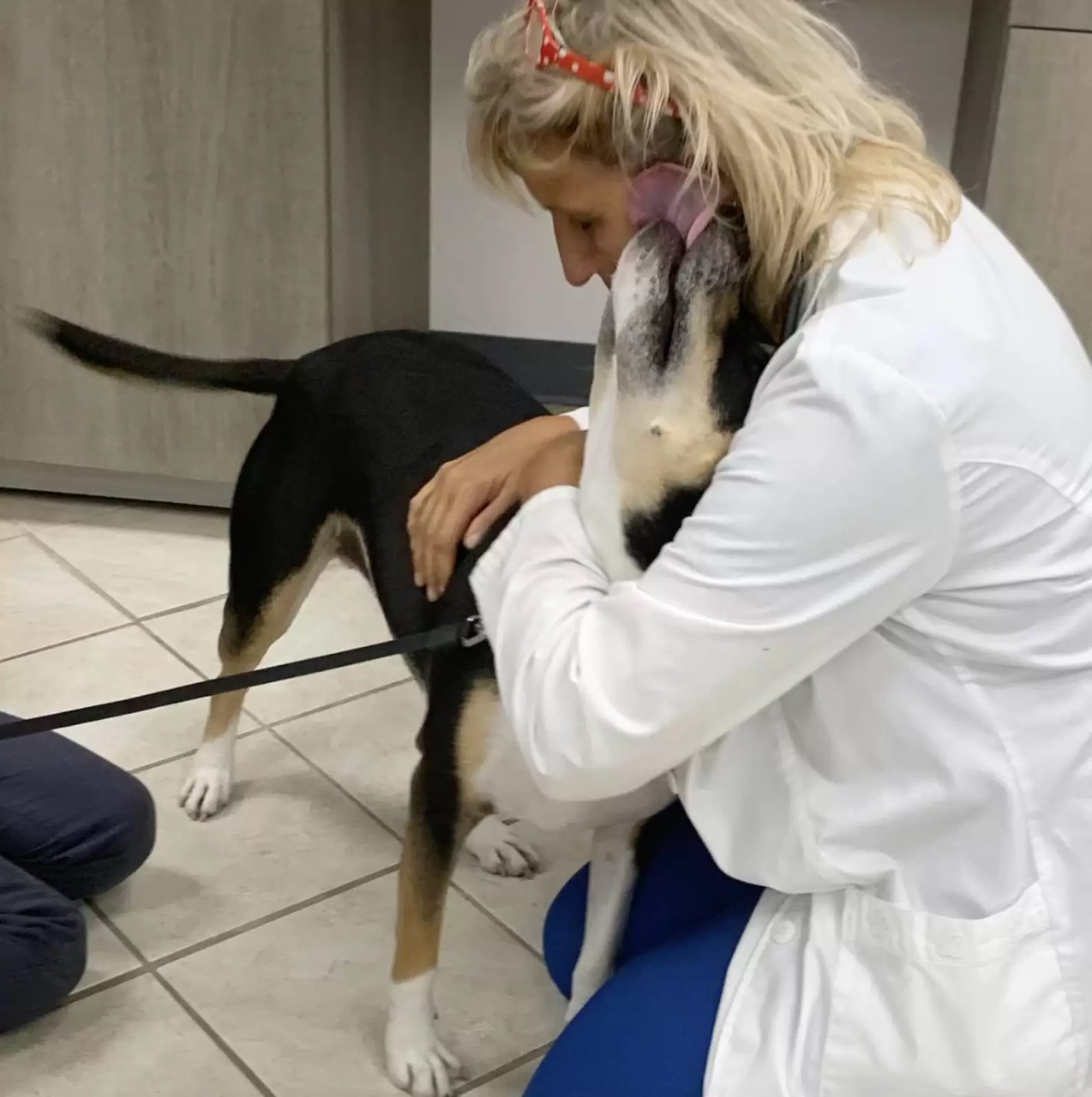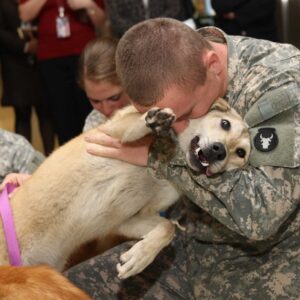
For some dogs, attending a vet appointment is basically the end of the world. As soon as you pull into the vet’s office parking lot, your dog may begin whining, shaking or refusing to move — and that can be a big problem for pet parents.
So, is there any way to make your dog actually like going to the vet? According to the veterinarians The Dodo talked to, there actually is!
With some patience and understanding, you can make vet visits go so much smoother and feel less scary for everyone involved.
So, how can pet parents make going to the vet a more positive experience?

According to Dr. Zach Marteney, DVM, a positive vet experience starts before you actually schedule an appointment.
“Allowing your pet to get used to car rides can help minimize the stress of travel on the day of the visit,” Dr. Marteney told The Dodo. “Start by introducing them slowly to the car — just walking around the car and giving them a few treats can start to build a positive association with the car. Then, sitting in the (parked) car with them and giving them lots of positive attention — and more treats — builds on that.”
Finally, you can start taking your dog on shorts rides, like backing down the driveway or taking a lap around the block. This shows your pet that rides aren’t inherently scary.
“Car rides can get longer and longer, with more fun destinations,” Dr. Marteney said, “and plenty of positive attention and tasty food for motivation.”

Before your dog’s paws ever touch the exam table, there’s one more step vets recommend before jumping into a first checkup. “Happy [vet] visits are one way to help,” Dr. Erica Irish, DVM, told The Dodo. “This is where pet parents come with their dogs and just greet veterinary staff in the lobby and/or in the treatment area.”
During these visits, the staff might give a pup parent-approved snacks, a lot of praise and that’s it. Nothing “negative” happens during a happy visit (like vaccines, for example).
“Stopping by the office to say hi and get a few treats can make the veterinary environment less intimidating,” Dr. Marteney agreed. “Most pets only see their vet when something awful (in their eyes) is happening … Making some stops to say hi on a positive note makes the office less scary.”
Just make sure to call ahead to check that the veterinary clinic staff has time to give your pup some positive attention.
“Another way is to come to the clinic or hospital with your dog’s favorite treats in your pocket and favorite toys,” Dr. Irish added. “And if none of these things help, ask your veterinarian for recommendations on calming products, medications, etc., to help lessen your furry friend’s anxiety.”

And once you get to the vet’s office, both Dr. Marteney and Dr. Irish said it’s important to keep everyone involved calm, cool and collected so the visit is as pleasant as possible.
Dr. Irish notes that when pet parents are calm, their dogs stay calm, too. “Pets can sense when we’re feeling anxious or nervous, and pets look to us for cues about what is happening in an unfamiliar environment,” she said. “If we are feeling nervous or anxious, our dogs may worry about what is going to happen in a vet’s office.”
“Once there, keep your voice calm and steady,” Dr. Irish continued. “Avoid raising your voice, and try to reassure your pup that things will be okay.”

But if your dog isn’t taking cues from you, then Dr. Marteney suggested pet parents look into pharmacologic assistance, like calming treats.
“Your veterinarian can also discuss prescription medications that can help manage your dog’s anxiety,” Dr. Marteney said. “There are several options that can be given, alone or in combination if necessary, a couple hours before your visit that can help turn that anxiety down a few notches. These medications are safe, fairly short-acting and can help make the experience much less anxiety-provoking.”

And vet visits are something you can talk to your dog’s trainer about, too, if you’re already working with one.
“I usually recommend training for better behavior as a whole, and not specifically for vet visits,” Dr. Irish said. “Anxious dogs or doggies with fear-aggression can benefit from training. The best trainers are those with certifications from various vet-backed organizations.”
Dr. Marteney agreed, adding, “I recommend trainers for all behavioral problems — situational anxiety included. Just remember, a trainer doesn’t train your dog, they train you. A good trainer can work with you and your dog on a one-on-one basis to help develop a training program to address your dog’s specific anxiety triggers. They will likely give you some exercises to do at home, and help give your dog some self-soothing behaviors, in addition to showing them that certain situations don’t need to be scary.”
He suggested discussing your pet’s upcoming vet visit with your trainer in detail and let them help both you and your dog address his triggers for the future.
Slowly introducing (or reintroducing!) your dog to the vet in a positive way will help him realize that the vet’s office isn’t such a scary place after all.





